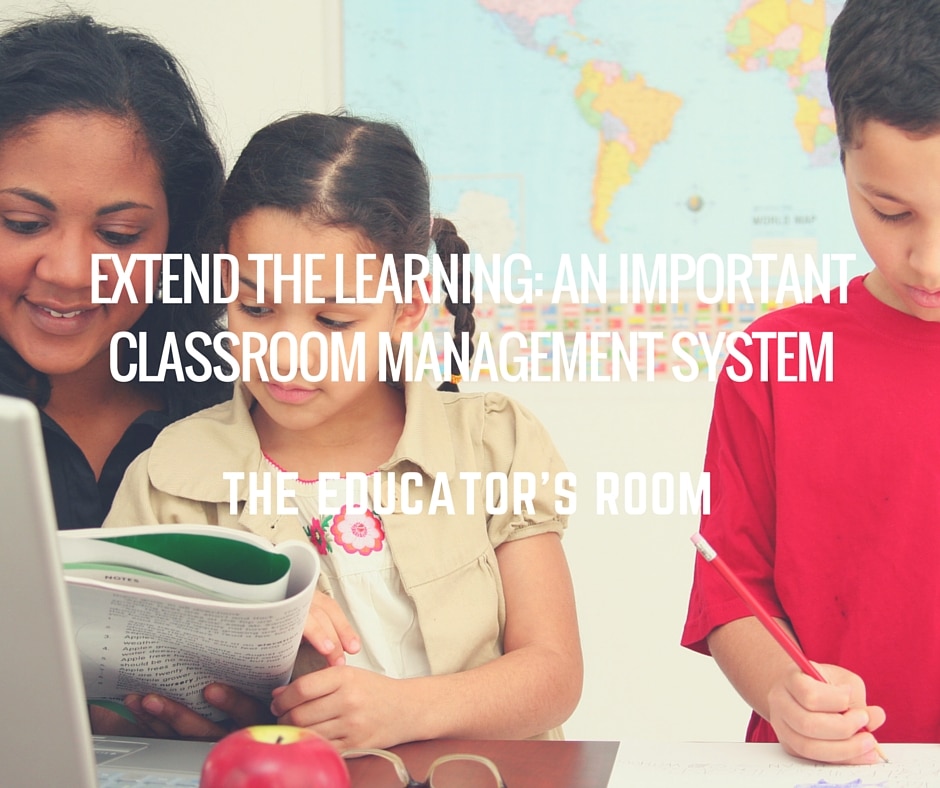Learning is an ongoing process involving effort, failure, persistence, and growth. I have been teaching for seventeen years and I learn new things from my students every year. I am an exemplary teacher and yet I am not done. This is what I model and expect of my students as well. Learning is never “done.”
Teaching in and managing a fourth-grade classroom is equivalent to playing the pop-up gopher game. When you get one student set down and working another one is “done.” When you are working with a small group, someone else has finished. When you have one student that needs review and re-teaching of a concept you have another student who is two grade levels ahead and wants a challenge. The beginning of the year is the perfect time to set up a classroom routine that will help you all year-long. I teach my kids that being “done” never happens.
[fusion_builder_container hundred_percent=”yes” overflow=”visible”][fusion_builder_row][fusion_builder_column type=”1_1″ background_position=”left top” background_color=”” border_size=”” border_color=”” border_style=”solid” spacing=”yes” background_image=”” background_repeat=”no-repeat” padding=”” margin_top=”0px” margin_bottom=”0px” class=”” id=”” animation_type=”” animation_speed=”0.3″ animation_direction=”left” hide_on_mobile=”no” center_content=”no” min_height=”none”][bctt tweet=” I teach my kids that being “done” never happens.” username=”EducatorsRoom”]
Our district has expectations that I am engaging students in subject matter for given time periods each day. I am expected to teach math for 80 minutes, science/social studies for 45 minutes, writing for 45 minutes, and reading for 120 minutes. During these times I have students who grasp a concept and complete a task or assignment or project. They are “done.” The easy answer is, “Go read a book.” Yes, it keeps them engaged in reading. Yes, it usually keeps them quiet. But what is the purpose? What do I want them doing? What should they be practicing? Having a student sit and read does not allow me to meet those expectations of teaching the subject for the given timeframe.
Instead, I have some simple things set up in my classroom and I teach my students this process.
- Complete work
- Check work—is it your best?
- Self-evaluate what you need in this subject
- Find an activity or game to match those needs
- Keep working on the subject we are learning
This does take some time to set up. I have to gather resources (thrift stores, Teachers Pay Teachers, and garage sales are my favorite go-to places) and organize them. The Florida Center for Reading Research has some fantastic games as well. After we have played a game in math I add that to the stash. You want to gather information, resources, and games that reinforce your standards for each subject.
We have already started learning about this system in my classroom this year. This first week of school I have spent time explaining where each subject area is in our classroom (they are set up on bulletin boards and wall displays). We have done a scavenger hunt to find each area. Students have been shown where the games, books and resources are located and how to put them away correctly. Talking about and teaching the students to use the system will pay off soon. During our math activity Friday I was working with a group at the table and I had three students who grabbed a math game without even asking. They were ready to move on and we were not. They were not, however, “done.”
[bctt tweet=”They were not, however, “done.”” username=”EducatorsRoom”]
There is minimal effort needed to maintain this system because the questions are open-ended and can go with any book. The games are changed out. I always know it is time for a switch when I notice students spend more time talking than playing. And the books I cycle out as our topics change. This way students are engaged in the subject area for the majority of our class time. They are not simply racing through the activity and reading. With this system, I have provided tools for my students to continue their learning beyond “Go read!”
Last winter I wrote an article explaining my response when students tell me they are “done.” Students deserve our expertise and guidance whether they are re-learning or need an extension. Check out how to implement this system into your classroom with a description and examples for each subject area. As you set up your systems this fall, include activities to meet all needs. Challenge your students to take responsibility and challenge themselves in their learning. You will see amazing results.
 [/fusion_builder_column][/fusion_builder_row][/fusion_builder_container]
[/fusion_builder_column][/fusion_builder_row][/fusion_builder_container]





